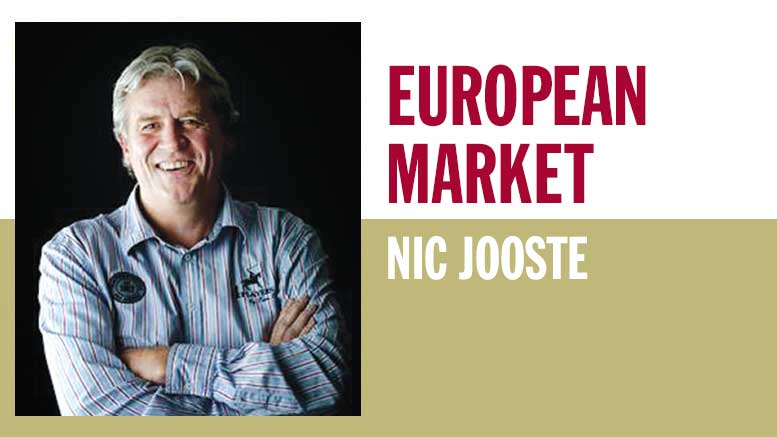Sustainable Packaging Solutions
September 23, 2020 | 4 min to read
In November 2018, an article highlighted The Netherlands as the world's second-largest food exporter, attributed to its trade-centric culture and heavy investment in innovation. The nation leads in sustainable packaging through the Kennisinstituut Duurzaam Verpakken (KIDV), which promotes a holistic approach to packaging sustainability. The KIDV advocates for a three-track strategy focusing on recycling, circularity, and intrinsic sustainability, aiming for innovative solutions that minimize environmental impact while addressing societal needs, despite resistance to change.

Originally printed in the September 2020 issue of Produce Business.
In November 2018, I wrote about the unique position of The Netherlands in the global food arena. Although the country is 270 times smaller than the United States – about half the size of South Carolina — The Netherlands is the world’s No. 2 exporter of food as measured by value, second only to the United States.
The Netherlands has two key drivers that enable it to play such a massive role in food. Firstly, there is the ‘trade is in our DNA’ component. Secondly, to maintain and build its competitive position, The Netherlands invests heavily in innovation in knowledge. It is therefore no wonder that The Netherlands has taken the lead in Europe in terms of the thinking around sustainable packaging. The country boasts a powerful packaging innovation thinktank, ‘The Netherlands Institute for Sustainable Packaging’ (in Dutch ‘Kennisinstituut Duurzaam Verpakken’ – KIDV).
It is common knowledge that the development of product-packaging combinations involves more than just the use of less or different material. The KIDV looks at the entire life cycle of the product and its packaging, from the use of (raw) materials to the logistics process and from consumer behaviour to the disposal phase, AND makes its research findings freely available.

PHOTO COURTESY OF A TOP PACKAGING
Last month, this institute released a comprehensive research document of 172 pages called ‘The State of Sustainable Packaging’. With the approval of the KIDV, I have prepared a synopsis of this very comprehensive document.
Without packaging, the consumption needs of a large and growing global population cannot be satisfied. A European consumer opens and discards an average of seven packages per day. Of these, 65% are used to package food products. Our consumption exceeds the boundaries of our planet. Packaging materials are without a doubt a substantial part of the problem and can cause new environmental and health problems.
Recycling alone is no longer sufficient; manufacturers now have to work on new product-packaging combinations that have no negative impact on the environment or public health. The KIDV is intensely involved in the challenge to develop sustainable alternatives that satisfy our packaging needs and eliminate the negative environmental and health impact. Doing so requires change, renewal, innovation and collaboration within the international packaging chain.
A European consumer opens and discards an average of seven packages per day.
The KIDV is adamant that a strategy of intrinsically sustainable development must be adopted. This proactive strategy goes beyond limiting and keeping problems in check just as they occur. Instead, it searches for sustainable ways to satisfy the needs and wishes of society. It does not inhibit the economy; rather, it goes all-in on exploring new opportunities and possibilities.
‘Consumers like more sustainable choices. No question about that. But consumers are still attracted to products first and foremost by how affordable they are, how well they perform and how beautiful the design is.’
—Tom Szaky, CEO at TerraCycle, United States
The packaging dilemma requires a structural solution. We can neither stop what we are doing nor continue doing it. We must opt for a course of action of ongoing innovation, a process that not only curbs and minimises environmental and health problems, but also prevents them and capitalises on entirely new opportunities. This path of innovation is inhibited by significant and large-scale consumer resistance and ignorance. We know that we have to change, but damn, old habits die hard!
The KIDV proposes a three-track innovation approach to address the packaging dilemma.
The first is recycling. Manufacturers focus on short-term recycling and efficiency in product/packaging systems. This is already running at full speed in leading countries. It is all about improvements to waste collection, sorting and recycling processes.
The second is circularity. This track is already top-of-mind in The Netherlands. It searches for more possibilities than merely the recycling of waste. It improves efficiency by introducing circular processes and logistics based around principles such as reuse, repair and refurbish.
The third is intrinsic sustainability. The KIDV is a strong proponent of the development of non-polluting, biosphere-compatible, and economically justifiable packaging systems. It focuses on society as a whole, and its effects take place over years and even decades. It is a very ambitious innovation track, as it requires society to be aware of the finite nature and depletion of natural resources, as well as the incompatibility and polluting nature of the material streams that currently are in circulation. This crucial and challenging step will ultimately result in the definitive solution to the packaging dilemma that is so urgently needed. It will enable us to substitute current, unsustainable packaging by newly innovated, intrinsically sustainable solutions.
Although the third track is a long-term vision that requires innovation, international collaboration and changes in our current production and consumption systems, there are already a few examples of intrinsically sustainable packaging. In my next column, I will take a deep dive into this.
6 of 25 article in Produce Business September 2020

